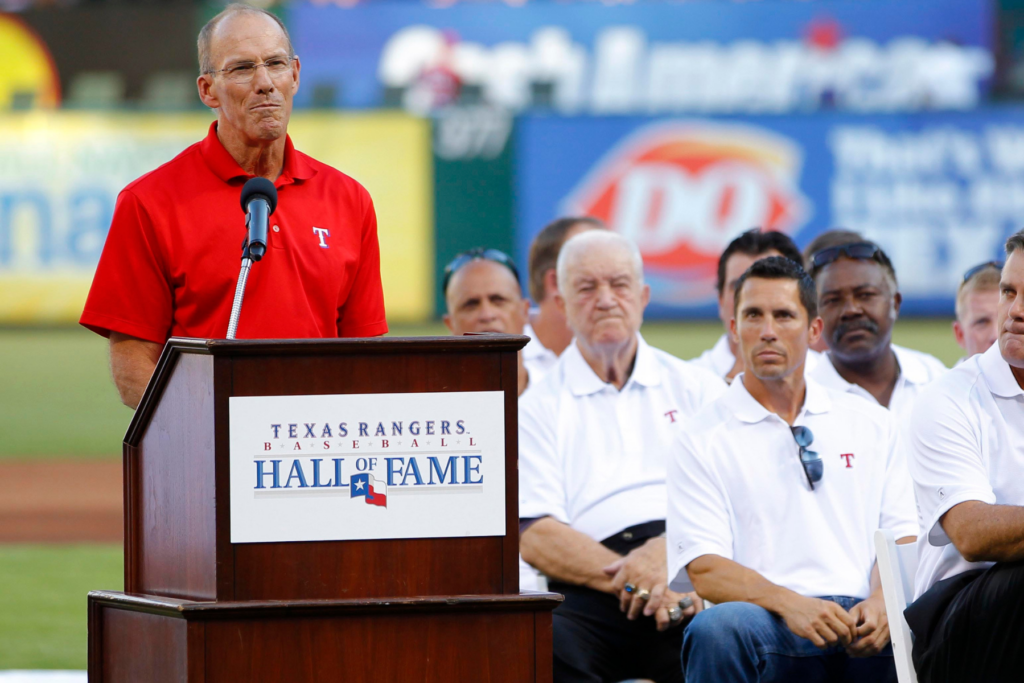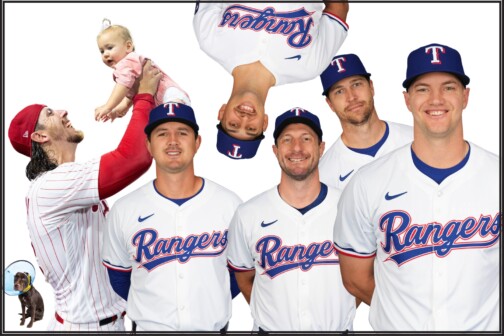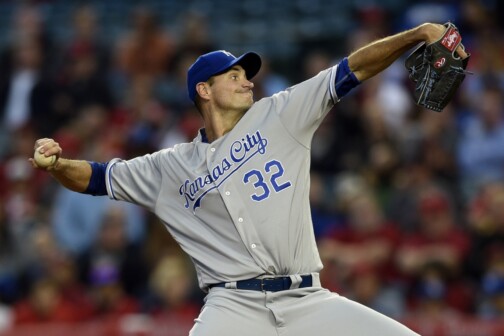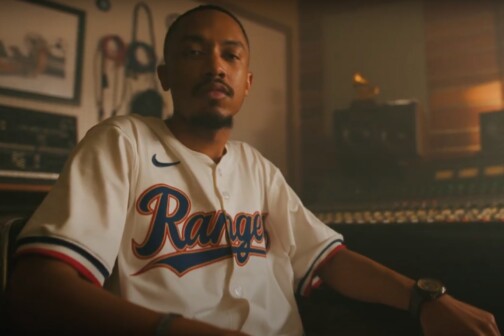I have very clear memories of my earliest days as a sports fan. It was 1976. I was 7. The Cowboys were great, the Rangers were not. But both gave me an energy that nothing else could replicate. Playing football with friends and—especially—baseball in uniforms with coaches and umpires and standings had levels of meaning and motivation that kickball and dodgeball, fun as they were, could never deliver.
Pro sports, in their unscripted greatness, were simultaneously unpredictable and yet all so dependable. The chill of football season and the thaw that baseball promised. The time the games began, the Cowboys on CBS and the Rangers on WBAP. The size and the design and the smell of the trading cards that captured the players who were invariably going to be around the next year as well.
And the fortunes of my teams. The Cowboys would spend four months getting ready for the playoffs, a party the Rangers were never invited to. And that was OK. Rangers baseball was like the State Fair, or the summer sci-fi blockbusters, or two days of snow. Here it comes, that was a blast, can’t wait ’til next year. No expectations beyond that. But by that age, I loved following the Rangers in August every bit as much as I did the Cowboys in January.
I was 8 1/2 when two sports moments scratched the needle across the pro sports grooves I had settled into. On Oct. 2, 1977, the Cowboys’ home game against the sophomore Buccaneers was not televised in Dallas—because the game hadn’t sold out. I vividly remember taking a family walk down Pennystone and onto Blue Trace during the game, tuned into Verne and Brad on KRLD 1080, nearly in tears that I couldn’t see Hollywood Henderson’s pick-six that I was hearing described. Cowboys games were never not televised. Except on that day.
Two months later, on Dec. 8, 1977, this happened:
The Texas Rangers trade pitcher Bert Blyleven to the Pirates, pitchers Tommy Boggs and Adrian Devine and outfielder Eddie Miller to the Braves, and outfielder Tom Grieve and a player to be named later (outfielder Ken Henderson) to the Mets, receiving pitcher Jon Matlack from New York and outfielder Al Oliver and minor league shortstop Nelson Norman from Pittsburgh.
Based on the information on the backs of their baseball cards, I could live with Blyleven for Matlack. All I knew about Boggs (a rookie) and Devine (a reliever) was that they were legitimate enough for Topps to include them in its 1977 set, but they never did much in the games I went or listened to. Oliver was exciting.
But a Rangers team without Tom Grieve was like a Cowboys game that wasn’t televised.
I’m sure I would have been more shaken had Jim Sundberg or Mike Hargrove or Toby Harrah been shipped away. But I loved Tom Grieve. He had a sweet swing. He had signed autographs for me both at a department store and at Northaven Park at season-opening Little League festivities. He had made his way into mid-’70s song lyrics for me. And to 8-year-old me (who at the time shared Grieve’s big chin), the Massachusetts native just looked like a Texan. He looked like someone maybe I could be.
How could Grieve, an original Ranger, one of the dependable hosts of the annual six-month party in the middle of my year, a good but not great ballplayer—on a team that, maybe one day soon, would be good, if probably not great—be a New York Met?
The Earth’s slip off its axis lasted a year and a half. In May 1979, five months after trading with the Mets to get Grieve, the Cardinals released him, and the Rangers properly brought him back home. Sort of. They sent the 31-year-old to Tucson, where he clobbered Triple-A pitching (.866 OPS, 14 homers in a little more than half a season). But they never brought him back to Arlington, and he retired at the end of the year.
That was a disappointment. But as a Ranger fan, by then a 10-year-old starting fifth grade, I was inured to disappointment. I knew no different, to the point it was almost not horrible. It was, had young utility infielder Ron Washington been asked to philosophize on the situation, how (Rangers) baseball go. At least Grieve had rightfully finished his career with the organization.
The playing part of his career, that is.
He worked in group ticket sales in 1980. He moved into baseball operations the next year and by 1983 was the director of player development. Grieve was promoted to farm director in 1984, but he didn’t stay in that role for long. At the end of the season, the Rangers made him their fifth (and, at 36, the league’s youngest) general manager, even though he would say in recent years he “wasn’t really meant to be a GM” because he lacked the patience and the knack for information-gathering. He would hold the post for 11 seasons.
The Rangers had never been a playoff team, and they weren’t during Grieve’s time, either. But he did set the franchise on a new course, first by making Texas the most formidable scouting operation in Latin America (Pudge Rodriguez, Juan Gonzalez, Sammy Sosa, Ruben Sierra, Jose Guzman, Wilson Alvarez) and then with the moves he made at the 1988 Winter Meetings, when in three days (after unsuccessfully pursuing trades for Don Mattingly, Wade Boggs, Steve Sax, and others) he traded for Rafael Palmeiro and Julio Franco and signed Nolan Ryan. For a guy who thought he wasn’t cut out to be a GM, he did one helluva job that week pulling one over on the rest of the baseball world.
And although the playoff drought hadn’t ended when Grieve was relieved of his GM duties in 1994, the teams that did win the West in 1996, ’98, and ’99 had his fingerprints all over them.
Grieve manned the job with an open honesty and a vibe of positivity in the face of the perennial that-was-fun-see-ya-next-year visit the Rangers dependably paid us. (He also humored teenage me in the mid ’80s, responding at least once after I typed up my trade ideas and Rule 5 suggestions on a dot matrix printer and mailed them to 1500 South Copeland Road, Arlington, TX 76011.) Grieve epitomized the Rangers at their at-the-time best: professional yet unassuming, competitive yet engaging. He personified it as a player, an executive, and a broadcaster, which he has been for the last 28 years. Now he’s going away again, not in a four-team trade but on his own terms.
I’m not sure the Cowboys were ever blacked out again after that day in 1977. I know Grieve has never not been a Ranger since 1978, the one year in the last 56 seasons that we didn’t have him around.
Grieve was inducted into the Texas Rangers Hall of Fame in 2010. Really, the Hall should be named after him. Eric Nadel, Chuck Morgan, and John Blake are just as identifiable with the franchise, of course, but their longevity is tied in each case to being at the very top of the game in one clearly defined role. For Grieve, the roles changed. More than once. He evolved as the franchise and the meaning of Rangers baseball evolved. Tom Grieve and the Texas Rangers: lockstep, sports-style.
They’ve always been his, he’s always been theirs, he’s always been ours. For a fan like me who counts Rangers baseball, in its ebbs and flows, its magical moments and its disappointments, as one of life’s unpredictable yet dependable constants, nobody has embodied it more than Tom Grieve. No matter your age, he made it more than OK to be a Rangers fan.
Get the ItList Newsletter
Author






